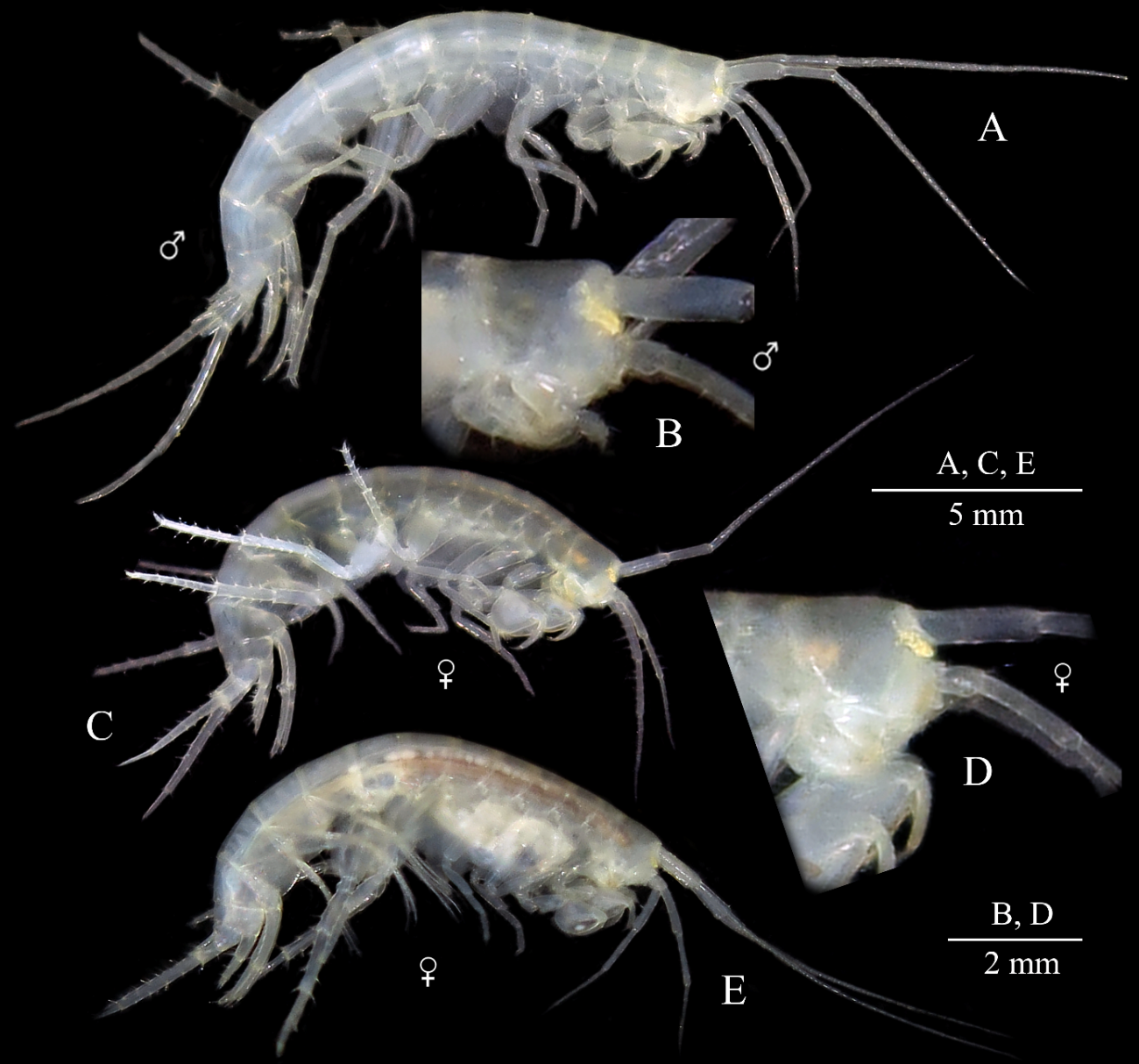
Researchers at the A.N. Severtsov Institute of Ecology and Evolution (IEE RAS) have described a new amphipod species of the genus Niphargus Schiödte, 1849 — Niphargus primoricus Marin & Palatov, 2025. This species inhabits the deep layers of pebble beaches (stygobiotic) in the Northern Black Sea region. This discovery indicates a previously undescribed habitat type for representatives of this genus and expands our understanding of the diversity of organisms inhabiting coastal pebble ecosystems, where highly specialized amphipod taxa have previously been described.
During studies of the deep layers of pebble beaches along the northern coast of the Black Sea, where endemic gammarids — Dursogammarus dromaderus Marin & Palatov, 2022 and Litorogammarus dursi Marin, Palatov & Copilaş-Ciocianu, 2023 (Amphipoda: Gammaridae) — were previously discovered and described, individuals of the genus Niphargus were also identified, which turned out to be a species new to science. Like these gammarids, the new species Niphargus primoricus is found in freshwater springs located deep in coastal pebbles and exhibits a pronounced stygomorphic morphology (reduced eyes, lack of pigmentation, etc.). Comprehensive surveys of the upper reaches of rivers, coastal springs, and marine biotopes at the sites of discoveries did not reveal the presence of this species outside the biotopes of pebble beaches, which allows us to speak with a high degree of confidence about its confinement to deep freshwater ecosystems, such as springs, streams, and small coastal rivers hidden under coastal pebbles.
Of particular interest is the wide geographic distribution of N. primoricus — the species' range extends nearly 190 km along the Black Sea coast—while individuals from distant locations exhibit extremely low levels of genetic divergence. These values are even significantly lower than those of other Ponto-Caspian and Caucasian amphipods with comparable ranges. At the same time, phylogenetically, N. primoricus belongs to a clade of stygobiontic species characterized by very narrow ranges (endemics), which is typical of most representatives of the genus Niphargus.
Similar distribution patterns, for example, are observed in some epigeic (living in surface groundwater bodies) Niphargus species, such as N. hrabei S. Karaman, 1932, N. valachicus Dobreanu & Manolache, 1933, and N. potamophilus Birstein, 1954, known from large river valleys (e.g., the Kuban River delta) and coastal areas of the Black Sea. One of the Caucasian species, N. bzhidik Marin, Krylenko & Palatov, 2021, also exhibits dispersal across the drainage basins of several neighboring mountain rivers (Pshada, Vulan, Teshebs, Bzhid), flowing into the Black Sea near Tuapse. All of these species are characterized by low genetic divergence between isolated populations. It should be noted that, despite its geographical similarities to epigeic species, N. primoricus differs from them in its lifestyle and morphological features. It is completely stygomorphic: it lacks eyes, but has small pigmented yellow spots on its head (presumably photosensitive), and inhabits exclusively the deep freshwater layers of pebble beaches, not being active on the surface. In contrast, epigeic forms typically retain pigmentation and eyes and are associated with surface water bodies, not adapting to life in groundwater.
One possible explanation for the widespread distribution of N. primoricus, despite its stygobiotic lifestyle, is its dispersal in the ancient Pontic freshwater sea, which existed approximately 9,000–7,000 years ago. During this period, the waters of the modern Black and Azov seas, as well as the mouths of major rivers (the Dnieper, Dniester, Danube, and Don), constituted a vast freshwater lake, isolated from the World Ocean and the Mediterranean Sea. The area was later flooded with saltwater, but stygobiotic taxa could have persisted in deep-sea freshwater coastal refugia.
Thus, the discovery of N. primoricus in the pebble beaches of the Northern Black Sea region significantly contributes to our understanding of the phylogeography of the genus Niphargus in the Ponto-Caspian region. The results of this study highlight the importance of comprehensive studies of coastal groundwater bodies as repositories of undescribed biodiversity. Further research into the ecology and distribution of N. primoricus will provide a deeper understanding of the mechanisms of adaptation and evolution of amphipods in unique transitional ecosystems of marine and freshwater origin. The results also highlight the role of pebble beaches and coastal areas of the Black Sea and the Ciscaucasus as key refugia for endemic subterranean fauna.
The article was published in the journal ZooKeys: Niphargus Schiödte, 1849 (Crustacea, Amphipoda, Niphargidae) is a new component of the biotic community in the deep pebble beach habitats of the northern Black Sea region. Ivan N. Marin, Dmitry M. Palatov, ZooKeys 1254: 283-311.
Related materials:
EcoSever: "A new species of crustacean was discovered in the Black Sea, hiding under coastal pebbles."
Science.Mail: "A new species of crustacean was discovered in the Black Sea."
